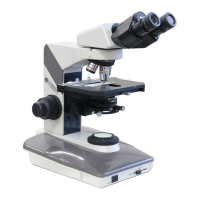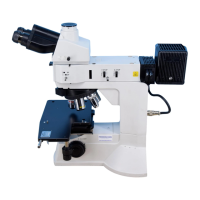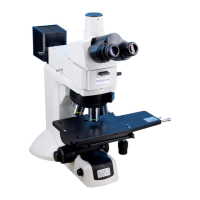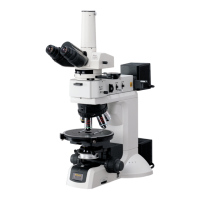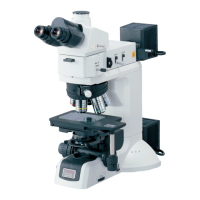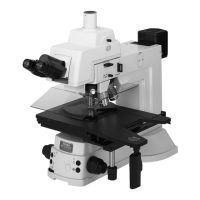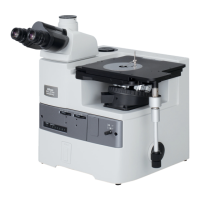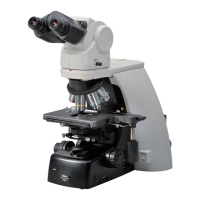v .PHOTOMICROGRAPHY
(The Biological Microscope LABOPHOT IS
designed mainly for observation.)
1. Combination of CF Objectives and
CF
PL Projection lens
The combined use of the CF objectives and CF
PL Projection lens is essential.
For the same total magnification, select a
combination of the highest possible objective
power and lowest possible projection lens
power to achieve the utmost image definition
and contrast.
2. Checking the Illumination
Uneveness in the illumination will show up
more conspicuously in photomicrography than
in observation. Consequently, before taking a
photograph, recheck the correct adjustment of
the condenser.
3. Selection of Voltage and Filter
1) When using a daylight type color fil m
Set the brightness control dial to 5.5 and use
the NCB 10 fi Iter
*-'
Adjustment of the image brightness should be
made by means of the NO filters.
2) When using a monochrome film
Remove the NCB 10 fi Iter. Contrast fi Iters such
as X-1 green are usable.
*-' The NCB 10 filter is most suitable for a
standard film. Depending upon the make
of the film different color renditions may
result. It is recommended that in addition
to the NCB 10 filter a color compensation
filter (CC filter), available from the film
manufacturer, be used.
4. Shutter Speed
Desirable shutter speeds for least vibration are
1/4~ 1/15sec.
Adjustment of the image brightness for color
photomicrography should be made by means of
the NO filters. Some specimens require, on
account of their insufficient brightness, longer
exposure times, and consequently poor color
reproducibility owing to the "Reciprocity Law
16
Failure" of film may result. So, when taking
picture of such specimens, it is recommended
to use the Nikon Biological microscope OPTI-
PHOTo
5. Manipulation of Field and Aperture
Diaphragms
In photomicrography, the adjustment of the
field diaphragm is important for the purpose of
limiting extraneous light which causes flare in
the microscope image. Stop down the dia-
phragm so as to get an illuminated area slightly
larger than that of the picture field. By adjust-
ing the aperture diaphragm, a change of depth
of focus, contrast and resolution of image is
attainable. Select a size suited to the purpose.
Generally speaking, the aperture diaphragm, is
properly stopped down to 70 ~ 80% of the
aperture of the objective being used.
6. With Regardto Condensers
For photomicrography, it is generally rec-
ommended to use the Swing-out Achromat
condenser. When using 2X objective, however,
preferab Iy remove the condenser.
7. Focusing
Focusing is to be accomplished by means of the
ocular finder on the photomicrographic attach-
ment, or binocular observation tube with mask
eyepiece on the trinocular eyepiece tube.
Table 3. Focusing
Type of
Focusing with
Focusing with
eyepiece
10x or
4 x or
tube
higher objective
lower objective
Use
Use
Focusing
"F" tube
Ocular
Ocular
+ magnifier
finder
fi nder
Use
"T"
observation
Use
tube
or
observation
Focusing
or
+ magnifier
"UW" tube
tubeOcular
finder
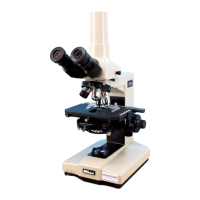
